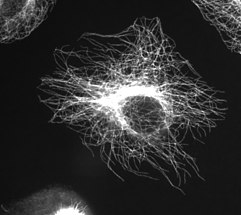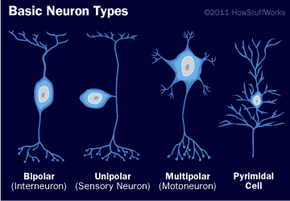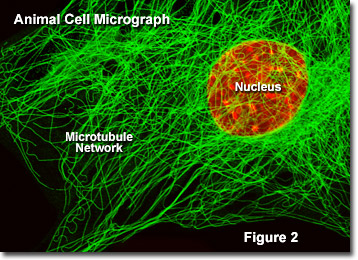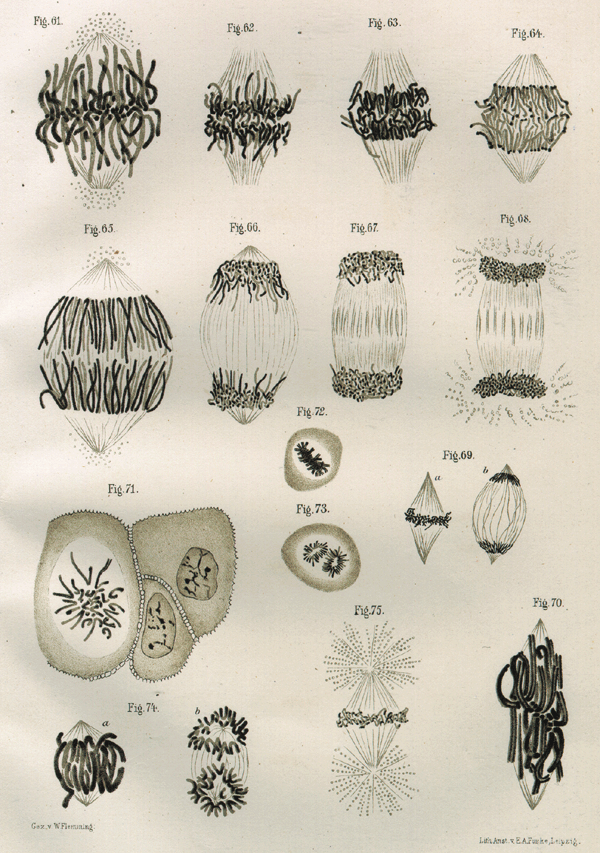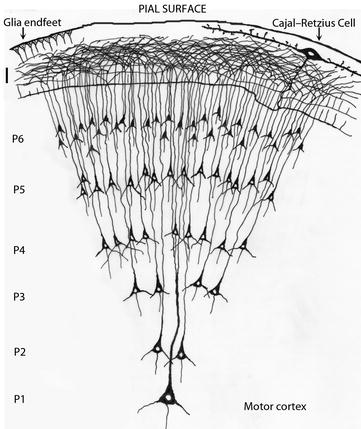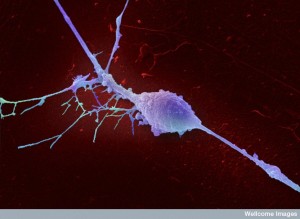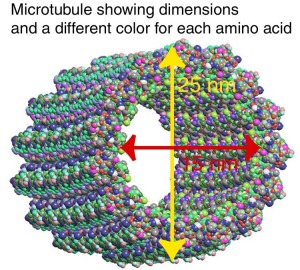Define "data processing". That usually involves input, manipulation and output of something "processed". Tell me what the inputs and outputs are for microtubules, specifically, and what gets processed, exactly.
Your claim is that microtubules do the "data processing", not activities in synapses and at the higher neural level. That's what you need to establish.
OK
I had hoped that people would do some of their own research.
I am not trying to be a teacher, just an observer. But being that you insist.
How Your Brain Works
By:
Craig Freudenrich, Ph.D. &
Robynne Boyd
Basic Neuron Types
Meet the neurons!
©HOWSTUFFWORKS.COM
Neurons come in many sizes. For example, a single sensory neuron from your fingertip has an axon that extends the length of your arm, while neurons within the brain may extend only a few millimeters.
They also have different shapes depending on their functions. Motor neurons that control muscle contractions have a cell body on one end, a long axon in the middle and dendrites on the other end. Sensory neurons have dendrites on both ends, connected by a long axon with a cell body in the middle. Interneurons, or associative neurons, carry information between motor and sensory neurons.
These fundamental members of the nervous system also vary with respect to their functions.
- Sensory neurons carry signals from the outer parts of your body (periphery) into the central nervous system.
- Motor neurons (motoneurons) carry signals from the central nervous system to the outer parts (muscles, skin, glands) of your body.
- Interneurons connect various neurons within the brain and spinal cord.
The simplest type of neural pathway is a monosynaptic (single connection) reflex pathway, like the knee-jerk reflex. When the doctor taps the right spot on your knee with a rubber hammer, receptors send a signal into the spinal cord through a sensory neuron. The sensory neuron passes the message to a motor neuron that controls your leg muscles. Nerve impulses travel down the motor neuron and stimulate the appropriate leg muscle to contract. The response is a muscular jerk that happens quickly and does not involve your brain. Humans have lots of hardwired reflexes like this, but as tasks become more complex, the pathway circuitry gets more complicated and the brain gets involved.
Ah, but now we are talking about neurons. No one disputes that neurons process electrochemical data. But the word microtubule has not been mentioned once in the above article. So where do microtubules come into the picture?
Let's step back and draw an analogy of "neurons" with "electrical" cables, switches and distribution centers that are more familiar to us all. We have all handled electrical power cables, turned on a light switch and maybe changed a fuse in the fusebox and this picture should look familiar to all;
An electrical circuit'
Note the "input array" from the fusebox (receptor) and the distribution of electrical data throughout the system via electrical cables.
But what is inside these electrical cables that really do the "work" of electrical transmission?
Note the copper and aliminium "conductors" that do the actual transport of electricity. The rest is "shielding" and "separation" of the copper and/or aluminium wires.
Now let's draw a picture of a neuronal cell;
note the multipolar microtubular circuitry (purple) just as in an electrical system. All microtubules in axons are connected to form the actual distribution transport highway of electrochemical data, just as the copper wires in electrical cables provide the distribution transport network of electricity in a house.
Inside a single neural cell body (the receptor,
(fuse box)), its cytoplasm contains hundreds of microtubules (cytoskeleton);
that are responsible for the shape and organization of the cell itself and form the transmission network of electrochemical data throughout the body and brain via the "axons" and "dendrites" where we deal with voltage, wattage, amperes, wire gauge, insulation, shielding.
The data itself is in several forms depending on the nature of the external source just as in electrical systems, but AFAIK the biological neural network is much more sophisticated inasmuch that the "data" comes in various forms and chemistry, unlike the purely binary (on/off) system in computers and the microtubules must be able to dynamically change to account for various electrochemical properties.
The data itself comes in different forms from our senses, gets translated and distributed to the proper organs for processing.
Example:
https://www.scientificbeekeeping.co.uk/Sensillaanat.html
Note that the incoming data gets processed by and leaves the sensory organ via "axons", always! Axons are the cables that shield the microtubule network from injury and external influences.
I don't see why any of this would present a conceptual obstacle. I do not claim any knowledge of the electrochemistry itself and how that translates into conscious thought rather than rudimentary action potentials and responses. As the world knows that is the "hard question".
But I have confidence that the microtubule network is directly instrumental in the subjective "experiential" results.
This biological neuronal data processing is extremely complex but there is no magic in any of this.
As Tegmark observes ; "Our bodies and brains contain all the ingredients necessary for the emergence of conscious thought. Our ability to think is a "hard fact" that cannot be ignored and that is where all inquiry should begin, rather than ask the "hard question" we cannot even formulate.
IMO, the next step down is the role of the microtubule network in the body and brain in the distribution and experience of sensory data and that is what I am exploring.


